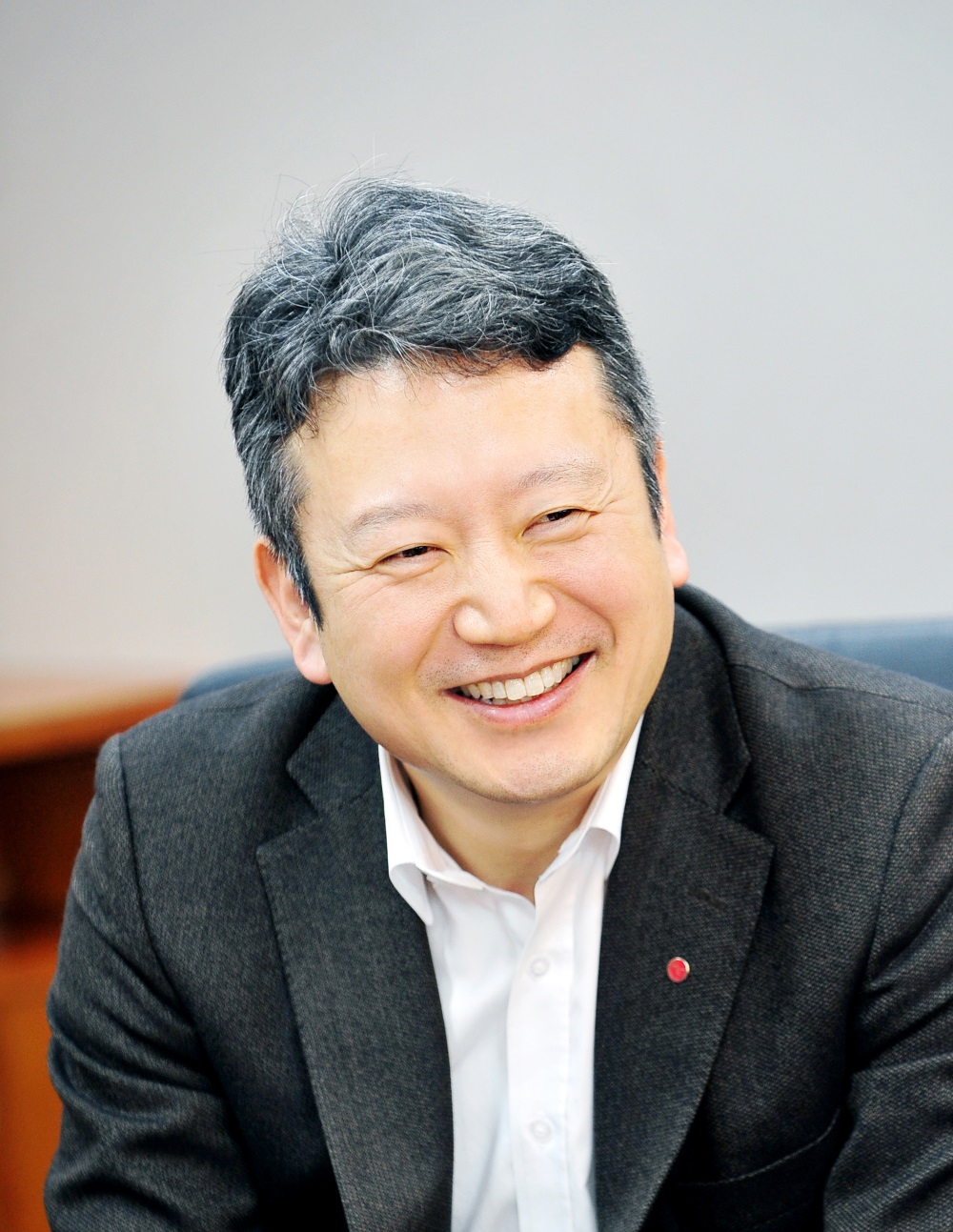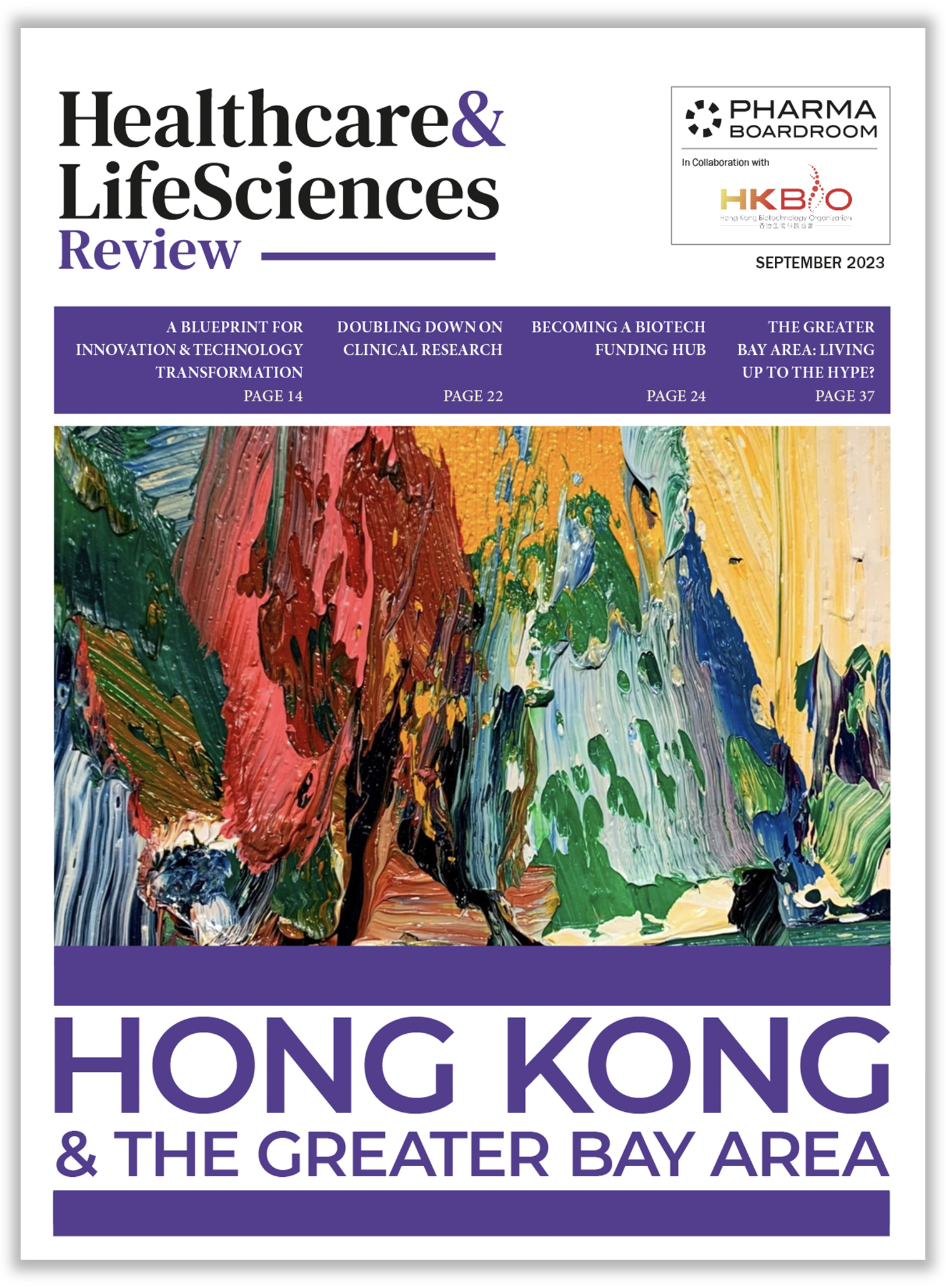LG Life Sciences is one the early pioneers of innovative drug development in Korea with a diversified portfolio of chemical drugs, vaccines, biosimilars, biologics, and dermo-cosmetics. Its president, Dr Son, explains the reason why he joined the company, his strategy to turn it into a truly global entity, and its new areas of focus. Dr Son shares his advice to local companies wanting to reach the global stage.
Your position at LG Life Sciences is your first experience as president of a company. Why did you decide to take on this challenge?
I began my career as a physician in internal medicine before moving to a Medical Director position in the pharmaceutical industry. I then switched to a research position at AstraZeneca. My goal was to learn and build expertise across the value chain to be able to transform an idea into a product and finally bring that product to market. At the time, this expertise was lacking in Korea. The country had no track record of successfully bringing new drugs to the local and global market, with the notable exception of LG Life Sciences. This is because the local pharmaceutical industry only had pieces of the puzzle, but not the complete picture. When I joined the industry, South Korea already boasted good scientists in the Life Sciences-related field and possessed well-trained medical doctors aware of unmet medical needs. However, because of a lack of expertise in new drug development and the small market scale, most early-research ideas did not see the light of day.
In order to overcome this situation, I was eager to learn about how drugs are developed by multinational companies. I first moved from medical affairs to late-phase development, then early-phase development at AstraZeneca. Next, I delved into the drug discovery process at Hanmi. In a way, I walked along the drug development pathway in reverse. Finally, I took a position at LG Chem which acquired LG Life Sciences in 2017.
The reason I joined LG Life Sciences is that the company was among the first companies to engage in innovative new drug R&D in South Korea. Over its history, LG Life Sciences achieved a lot of firsts in Korea. For example, it is the first Korean company to develop and receive approval for a new molecular entity by the US FDA. However, this product was not commercially successful in the US and Europe.
Furthermore, there is a strong ambition to expand LG’s global footprint in the Life Sciences., LG Life Sciences currently generates around 43 percent of overall revenues abroad in over 70 countries. LG Life Sciences, and all other Korean pharma companies for that matter, should be global players and should not be content with the current 1.5 percent share of the global pharmaceutical market. We have to start winning in the advanced major markets.
LG Life Sciences is well-positioned to become a truly global player. We are one of the few Korean companies to possess the full value chain needed to bring innovative drugs on the worldwide stage, from early discovery to clinical development, manufacturing, marketing and sales.
To achieve this ambition, what are your key areas of focus?
LG Life Sciences had been historically focused on developing vaccines such as our Euvax B vaccine for Hepatitis B. – every four seconds, a child receives a Euvax injection. In the early 1980s, LG was one of the pioneers in genetic engineering and invested in the process development and manufacturing of this kind of biologics. Leveraging this expertise, the company started developing the first-generation biosimilar antibodies such as Eucept, the biosimilar version of Etanercept which became the first biosimilar drug launched in Japan. The next step for LG Life Sciences is to develop innovative new biologics. We have already launched a new DPP-4 inhibitor, the fifth of its kind on the global market. We also have a portfolio of dermo-cosmetics such as Yvoire, a hyaluronic acid filler, which is leading the Chinese market. Our portfolio is thus very diversified, composed of chemical drugs, vaccines, biosimilars, biologics and dermo-cosmetics. Notwithstanding this business, we also strengthen our R&D ability by expanding open innovation and new drug development in immunology, oncology, diabetes, and related Metabolics.
In recent years, LG Life Sciences has entered into partnerships with innovative biotech companies. How will this partnership help advance your ambition of becoming an innovative powerhouse?
Although new drug development presents significant challenges, uncertainties and risks, we believe in open innovation, particularly strategic partnerships that leverage the complementary capabilities of both parties is faster and more efficient. In order to make that happen, both good science and good processes are required. In terms of processes, LG Life Sciences possesses unique capabilities and expertise in CMC and GMP manufacturing. To leverage our in-house research capabilities, we have forged partnerships with biotech companies working on innovative platform technologies. One such company is US-based Cue Biopharma. Thanks to our agreement with Cue Biopharma, we will be able to expedite the development of our new biologic compounds using their state-of-art technology platform. Another company is HitGen which possesses DNA-screening technology useful for discovering new leads.
In the past, we were more concerned about building our own R&D capabilities to be able to do everything in-house, but from now on we are adopting a more flexible open-innovation approach working through strategic win-win partnerships. In order to be the best, you must surround yourself with the best.
LG Life Sciences was merged back into LG Chem in 2016. What has been the impact of this organizational restructuring?
First of all, there can be two different models to develop a new drug. The first is by starting a bio-venture and working through research partnerships to develop a handful of assets which might never see the light of day. The second is the Big Pharma model where all the functions are in-house, and a hundred projects take place simultaneously. While hard to predict which of these projects will be successful, the company can be assured that at least a few of them will reach the market.
Even though LG Life Sciences possesses the full value chain like Big Pharma groups, alone we lack the scale necessary to maximize opportunity and mitigate risk. The merger with LG Chem empowers us with the strength of size. We are now in a position to sustain larger R&D investments as high as 30 percent of annual revenues if we wish to do so. Moreover, LG Chem has made the growth of its biopharma business a priority. At present, LG Life Sciences represents less than 2 percent of LG Chem’s total turnover, but I believe we can increase this share significantly.
As part of the LG Group, an internationally recognized brand, it eases the ability to form connections around the globe, whether in the academic or corporate world, even though there is still not universal awareness that LG has a life sciences business.
We have met many local companies eager to internationalize their operations. However most of them have not managed to break through. How does LG’s development model differ from the rest?
What it means to be a global company is having global products and access to global talent. Many Korean companies simply lack these assets. The reason I am focusing on new drug development is that I believe new drugs can be easily globalized. On the people side, in order to attract global talent, this year we have opened an innovation centre in Boston headed by a translational research expert working together with our 400-strong research team in Seoul to move our new assets to global clinical trials as soon as possible. This is very different from the strategy we used to develop our DPP-4 inhibitor. This drug was entirely developed in Korea, then brought to global clinical trials which created large time gaps.
More and more Korean companies are pursuing global strategies similar to those which Japanese companies took before. In the past decade, Japanese companies become a global player through mergers and acquisitions, which is beyond just to increase market share in global market but to enhance technological capabilities and industrial know-how. For example, Takeda purchased US-based Millennium back in 2008. Later down the line, we might use a similar approach if it makes sense. However, M&As can create more problems than they solve if corporate cultures clash. In our case, LG Life Sciences should first open itself up to more diversity and adopt a global mindset through proactive open innovation activities. We will continue to build new strategic partnerships while evolving from existing partnerships in the US and Europe.
You have also formed partnerships with local players such as Medipost, a company developing stem-cell therapeutics. What is the rationale behind moving into stem-cell research, an area which is notoriously expensive and with uncertain market prospects?
When we developed our long-term vision and strategy, we decided to focus on three areas: diabetes and metabolic diseases, immunology, and oncology. In my opinion, stem-cell therapy is a game-changing disruptive technology. When I joined the company, we had a research team working on allogeneic CAR-T cell therapy, but not much in stem-cell research South Korea enjoys a tremendous lead in stem-cell research with four out the of the seven approved therapies born in the country. To take a quantum jump in the stem-cell research area, we decided to partner with Medipost. At the moment, we are focused on developing genetically-engineered cell lines in order to drive down manufacturing costs, leveraging both our in-house expertise in immuno-oncology and our partner’s core competency.
We have met quite a few local biotechs whose founders came from LG Life Sciences such as PharmAbcine and LegoChem. How would you assess the role of LG Life Sciences in shaping the local biopharma industry?
In Korea, there a handful of large traditional pharma companies. They began by manufacturing and distributing conventional chemical drugs and generics. However, LG Life Sciences has different DNA. We began with the mission to develop new drugs to address unmet needs for patients. We invited industry-leading scientists to join us and invested significant resources in developing R&D capabilities that match global standards. Unlike other local companies, we have a long history of taking risks without fear of failure. As a result, LG Life Sciences has been recognized by scientifically-minded Korean talent as the go-to place for meaningful research.







